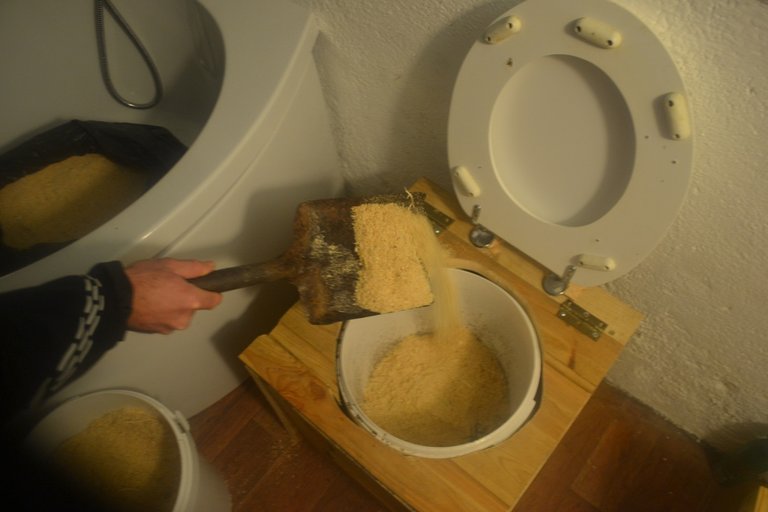"Enough of all the poo problems, we want to hear solutions!"
I hear you. It's high time we talked about how to properly dispose of our human waste. Or rather: How to transform it into something valuable!
If you want to catch up, you can read the preface to this series & part 1: The Era of Broken Cycles
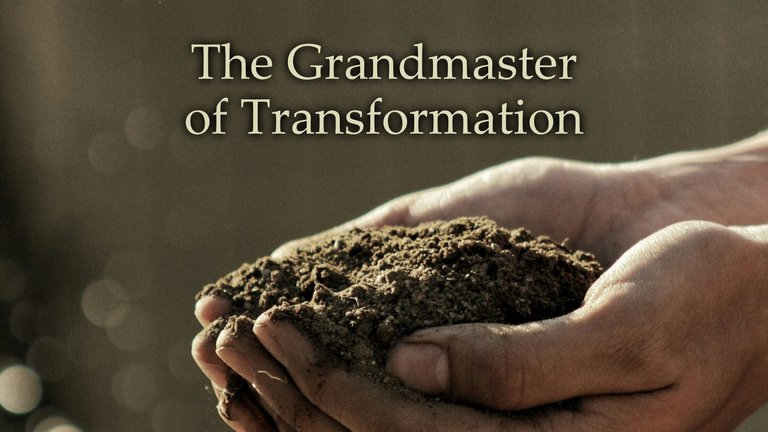
"Waste" is a misunderstanding
"Waste" is a term that describes something of no value, something that needs to be gotten rid of because it is useless or worthless..
While modern society treats human sewage like waste, we could see it instead as a resource like any other. A resource that needs proper understanding and handling in order to make it useful again.
This means we have to find the right place for it.
And the right place for human manure is neither in sewers, nor on fields or our garden!
Human poo harbors too many dangerous ingredients and can become a health risk when we or our food plants come into contact with it. These dangerous ingredients include all manner of bacteria, "viruses", parasites - things we have to somehow get rid of before we even consider using humanure as a fertilizer.
The good news is: this is fairly easy to do. We need to have the right conditions for nature to do that job for us. These right conditions for complete pathogen death are found naturally in a properly managed compost pile.
Almost as if nature... intended it that way!
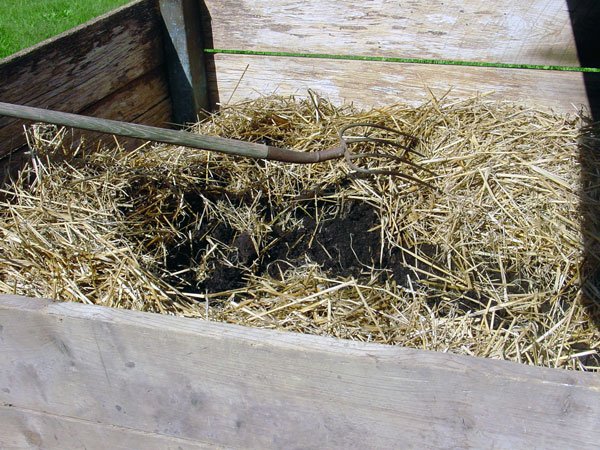
Eternal cycles
Nature can be immensely awe-inspiring, so much so that some devote their entire lives to studying it, while others feel "nature" is merely a more modern term for the word "God". Whatever you believe the facts remain the same:
Feces harbor all sorts of bacteria that are "waiting" for the right conditions, in order to become active and do their work. In the case of humanure composting we can create these right conditions on purpose, by collecting our refuse in one place, covering it with carbon-rich materials (such as sawdust), allowing oxygen to be trapped in the pile by using straw or hay, and granting the pile enough moisture... so that it can do its "magic" of transformation.
Once these conditions are met, what was once "waste" will slowly transform back into rich and fertile humus. Soil. Earth. Full of nutrients for plants to feed and thrive on!
Joe Jenkins, author of the humanure handbook describes the 4 phases of proper composting as
- the mesophilic phase
- the thermophilic phase
- the cooling phase
- the curing phase
In the early stages bacteria in the compost pile combine oxygen and carbon, into carbon dioxide and energy. The energy released is responsible for the heat generation - the compost pile slowly heats up to about 44°C (111°F). These "mesophilic" bacteria are most active during this stage, but become less and less prevalent as the temperature of the pile rises further.
Eventually the second group of bacteria start to take the spotlight: Upwards of 52°C (125.6°F) these "thermophilic" bacteria generate large amounts of heat and - depending on the conditions in the pile - can raise the temperature to a whopping 70°C (158°F) or even more!
This rise in temperature happens rather quickly and lasts a relatively short while (days, weeks or months). It is this thermophilic phase that ensures the complete and utter destruction of pathogens!

After the thermophilic bacteria are done doing their thing, the pile cools down by itself.
At this stage only the readily available nutrients from the organic materials have been digested - the coarser stuff is still present and now being worked on by nature in a different way: Fungi, earthworms, all sorts of little bugs and creatures move into the pile and do their work, slowly chewing away at things like larger wood chips, tree bark, bones, hair and more solid things in the pile. The compost has become an ecosystem.
This eventually leads into the curing phase, also known as the "aging" or "maturing phase" in which the pile just sits and "ripens" to become soil, visually indistinguishable from any humus or garden soil you have ever seen. Like in winemaking this stage is important and patience is key.
Jenkins advises that this final stage should be allowed to go on for about one year after the end of the hot thermophilic phase.
This not only enriches and normalizes the compost as more worms and ground creatures start to live in it, it also guarantees an extra layer of complete pathogenic microorganism destruction.
Although the many studies mentioned in the humanure handbook indicate that pathogenic microorganisms cannot survive temperatures upwards of 40°C (104° F) for long - not to mention temperatures of 55°C (130°F) and beyond - this extra curing phase gives us an extra safety net. We want to be sure that the humus made in this way is perfectly safe to handle and to plant our food crops in.
Eventually all pathogens outside the human body will eventually starve and be replaced by other microorganisms who prefer the compost as their habitat.
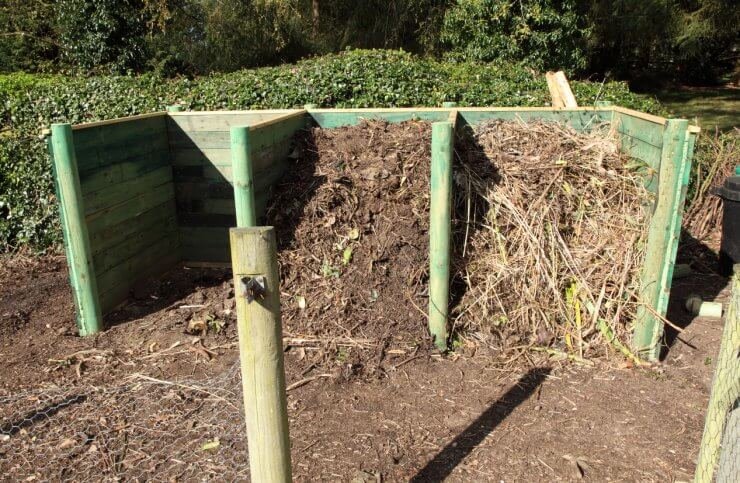
In practice this means:
Fill up a compost bin over a year or so during which the pile steadily heats up in the sections with the new "deposits". Remember, your poo is some microorganism's food! Feed the microorganisms!
After the pile is filled up, simply let it sit for one year to mature.
And done: You now have a large pile of fine-smelling, earthy, dark and fertile bio compost you can use in your garden or anywhere you want plants to thrive!
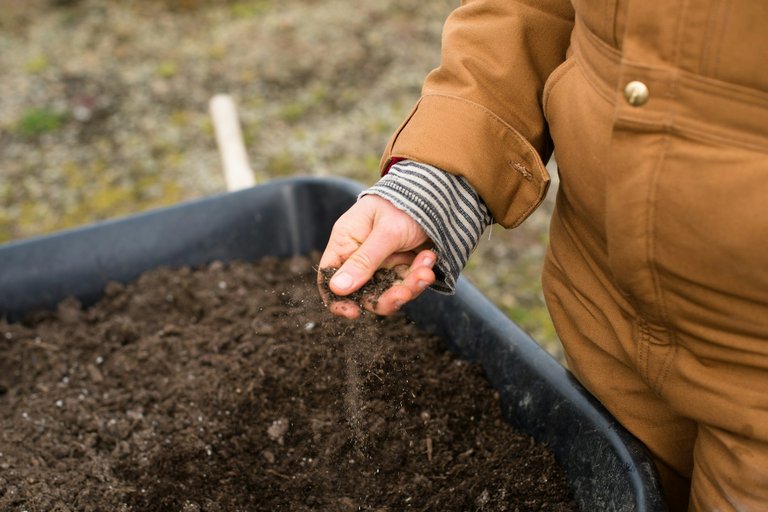
Other health benefits of thermophilic composting
While the book goes into greath depth on this, I only want to mention briefly that compost piles cannot 'merely' recycle human sewage this way; there are many other things we think of as 'waste' that thermophilic composts will devour and transform.
Here is an excerpt from chapter three, microhusbandry (page 73):
"Compost microorganisms not only convert organic material into humus, but they also degrade toxic chemicals into simpler, benign, organic molecules. These chemicals include gasoline, diesel fuel, jet fuel, oil, grease, wood preservatives, PCBs, coal gasification wastes, refinery wastes, insecticides, herbicides, TNT and other explosives."
Wow, right?
Although humanure composting shows even more promise I will leave it at that for the moment...
So there you have the basic recipe. It's not difficult to do, but it does require some knowledge and information to make this happen where you are.
You will need to know
- how to make a toilet system that works for you
- construct a compost pile that is fed with the right ingredients for a good "diet" the bacteria can chew on
- maintain the pile until it is completely transformed into safe and fertile humus
Fortunately I have had the benefit of not only reading about this in theory but also using such a system in practice. My woman and I have applied former humanure (now finest garden humus) to food fields, and have grown and eaten our own food during our 10 month long housesit in Bulgaria years ago, where I first heard of the humanure composting idea.
Anyone can do this! No matter where you live or what materials you have available. Building and maintaining a humanure composting system can be really low-tech and the rewards can be immense.
If you have any questions and don't want to wait, please do leave them in the comments.
More on the practical side of things in the next part of the series!
